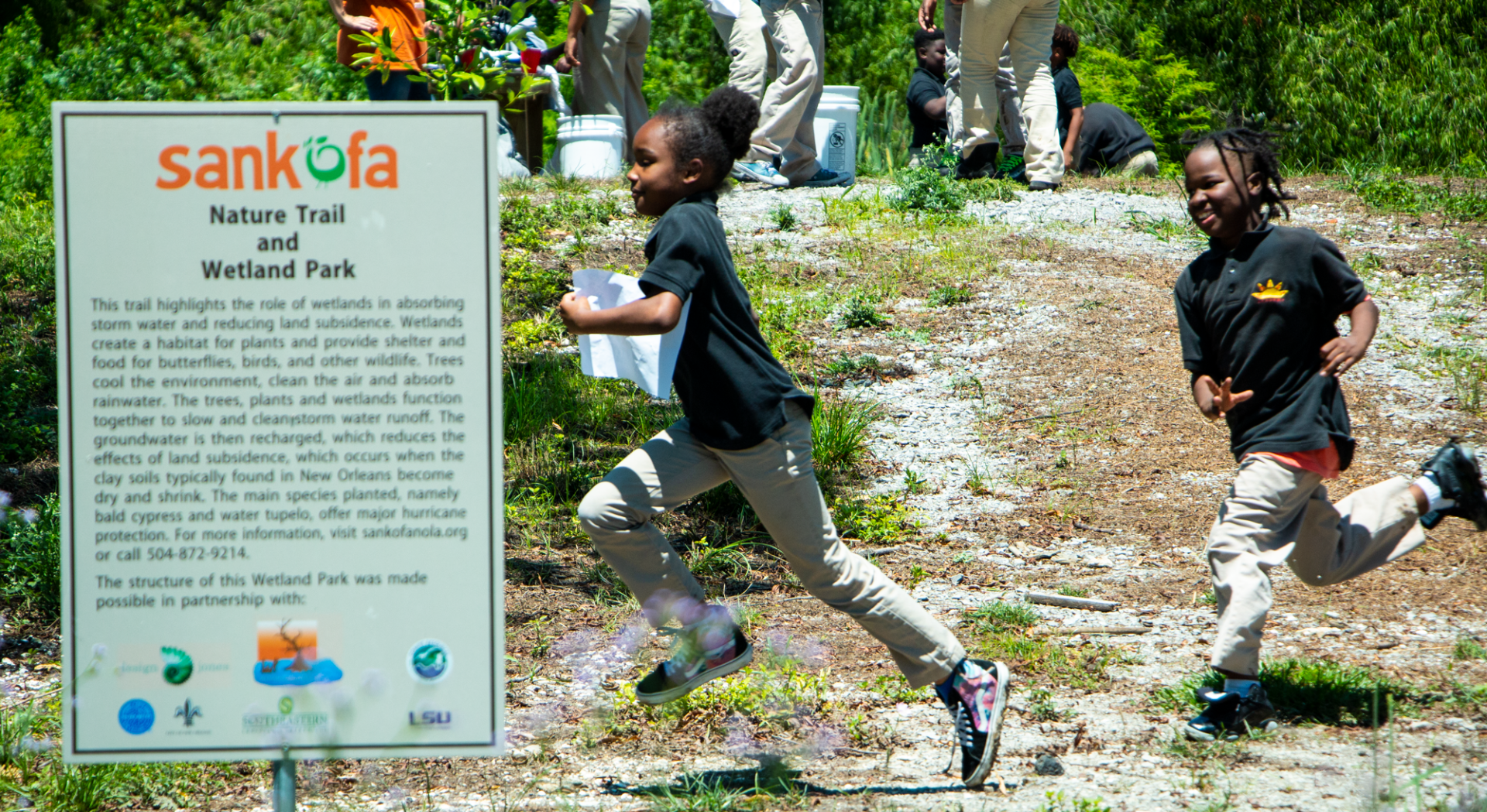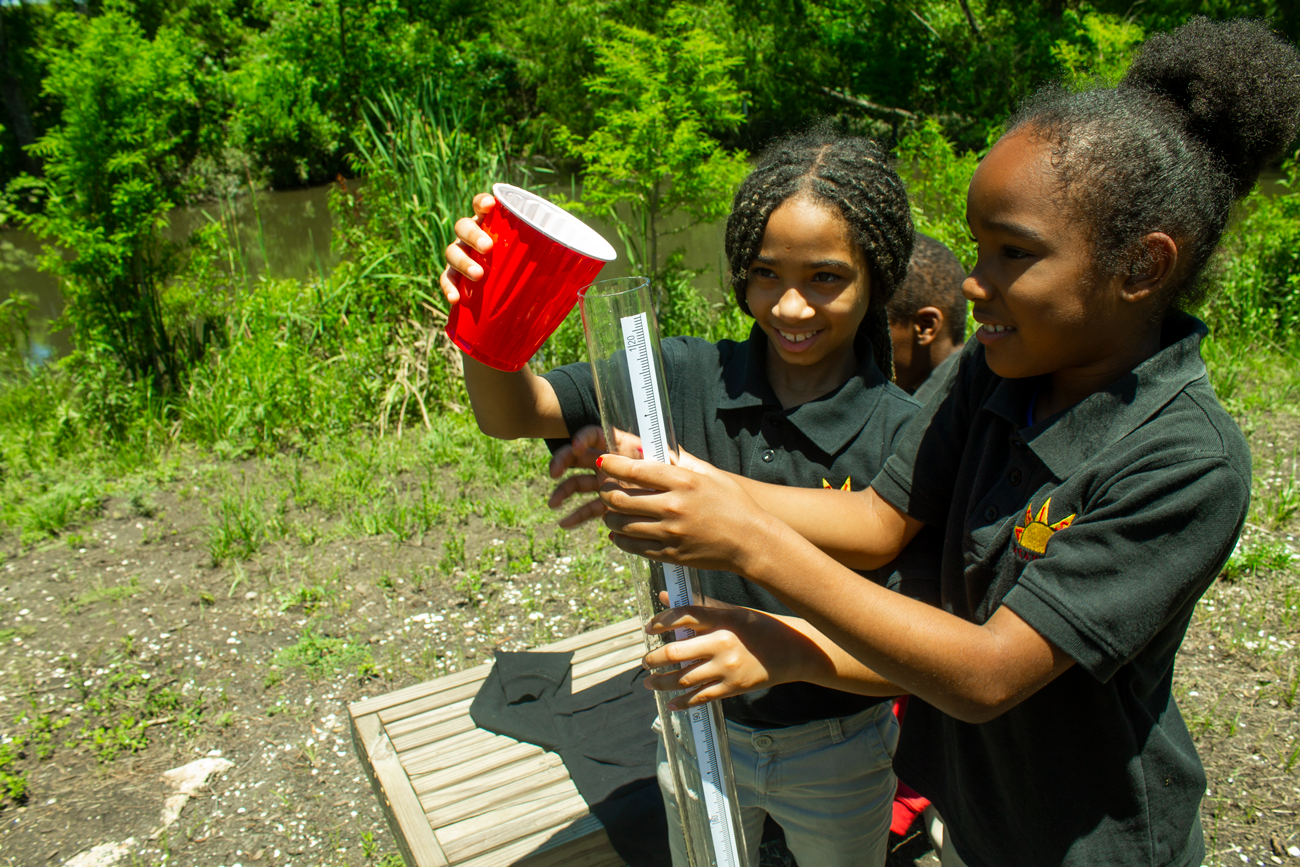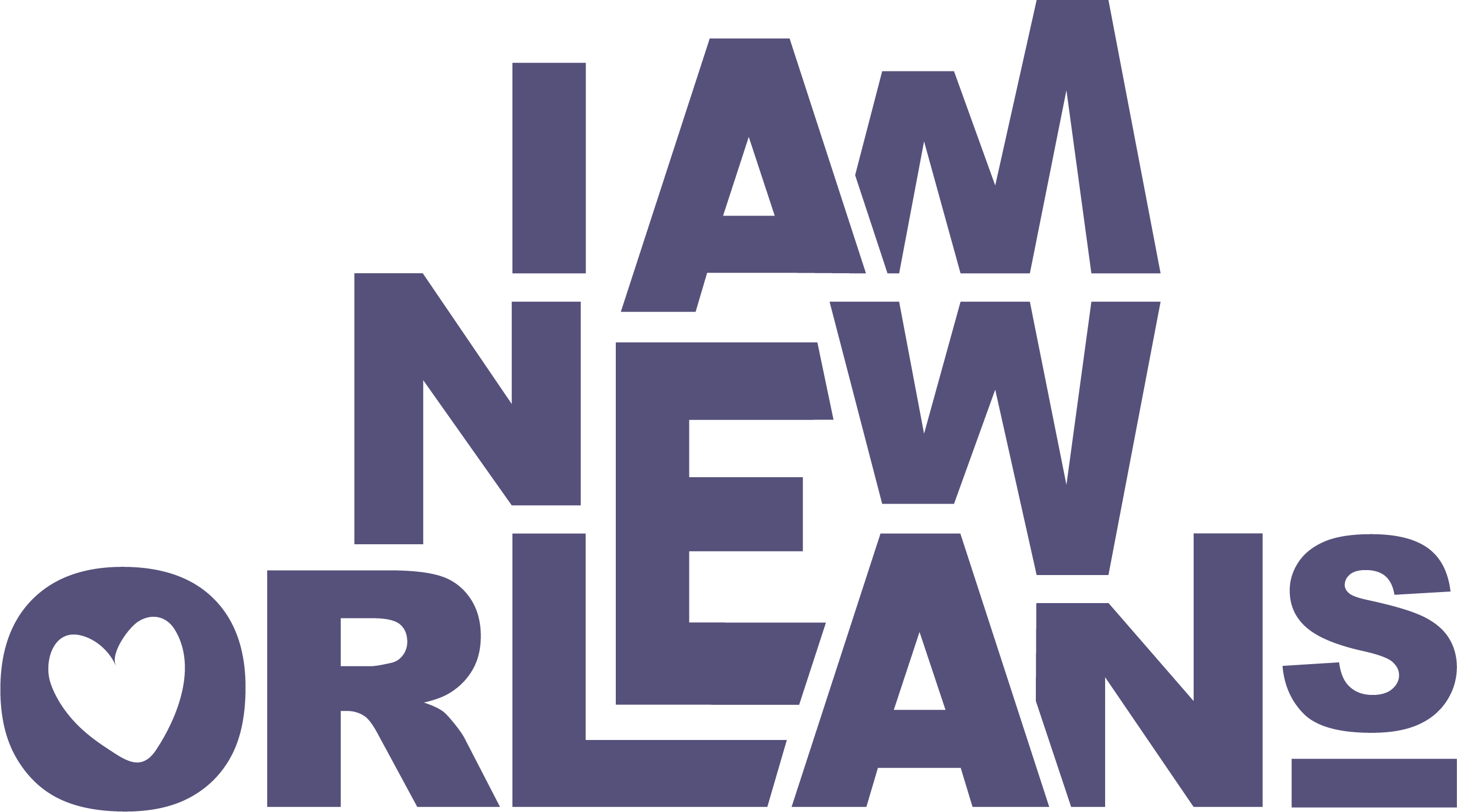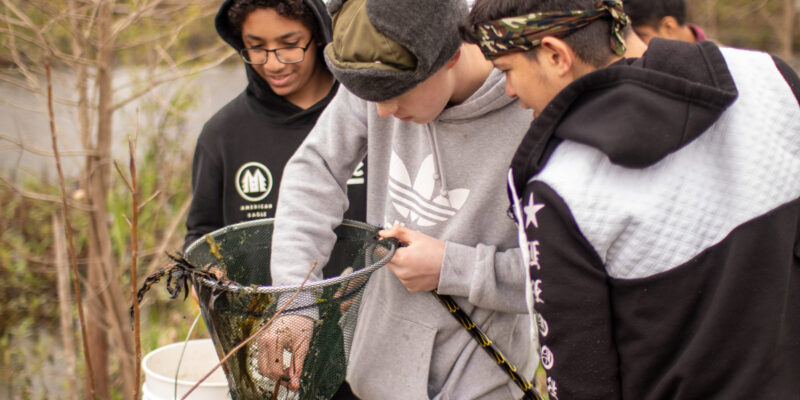Nearly two decades after Hurricane Katrina, the people of New Orleans continue to be a testament to hope, ingenuity and perseverance. Communities have done more than rebuild — they are reimagining systems to create opportunity for all, especially children. While significant progress has been made, critical work remains to ensure that growth is truly equitable and lasting. As part of an ongoing reflection series called Rooted In Us, W.K. Kellogg Foundation (WKKF) staff and local leaders will share their perspectives on community efforts, lessons learned and the investments still needed to build a future where all New Orleanians can thrive.
In this conversation, Malana Joseph Mitchell of Spears Group, a New Orleans–based communications partner of the Kellogg Foundation, sits down with Rashida Ferdinand, founder and executive director of Sankofa Community Development Corporation. Since 2008, Ferdinand and the Sankofa team have worked to advance health equity, strengthen food access and restore land and opportunity in New Orleans’ Lower Ninth Ward. Their conversation explores the past 20 years of community-led change — and what’s needed for the decades ahead.
Mitchell: How would you describe the core vision that has guided your work in the Lower Ninth Ward since Katrina?
Ferdinand: Our core vision has always been about restoring resources that support people’s quality of life. We look at the social determinants of health — those factors that directly impact lifespan and mortality — and we try to break down the barriers through various interventions.
Our mission is to build resources that improve people’s lives. That’s evolved into many types of work through a lens of environmental health, food access, mental health — everything that helps our community thrive and survive.
Mitchell: Looking back over the last two decades, what would you say has been the most meaningful impact of your work? I know it’s a lot — but in terms of health, food access, economic development or environmental restoration, what stands out?
Ferdinand: There are two main projects that really reflect what we’ve been building since launching Sankofa in 2008.
First is the Sankofa Wetland Park, a 40-acre green infrastructure project. It started as a two-acre pilot and has grown steadily. We restored water systems using bioretention ponds, planted cypress and tupelo trees, introduced native species and enhanced wildlife habitats.
It’s become a living model for nature-based community development —something that turns devastated, neglected land into a beautiful, functioning ecosystem. It’s not just about restoration, but revitalization after disaster.
Second is the Fresh Start Market — I’m actually here right now. It’s a community-based healthy food hub and retail space that offers fresh, affordable produce every day. It’s the only resource like this in our neighborhood, and it’s integrated with community education, health advocacy and policy dialogue. It also serves as a physical anchor for health-centered neighborhood development.

Mitchell: When you talk about that work, it takes me back to those early years after Katrina. Can you share what those years looked like and whether there’s a moment or story that stands out and still guides you today?
Ferdinand: In the early years, we were inspired by each other and driven by possibility. We operated from a visioning space — imagining what could be rebuilt and how to reclaim our space in community.
We organized in our homes, met with neighbors and planned Sankofa Marketplace to offer resources taken away from our community. And in 2008 the marketplace opened to connect people through food, music, culture, advocacy and services. Many residents hadn’t seen each other since the 2005 evacuation. People came home, even briefly, and reconnected for the first time at the Sankofa Marketplace.
That showed us it’s not just about physical resources, but about being a convening space — a place where people feel safe, loved and connected. That continues to guide our work today.
Mitchell: That leads to my next question: community leadership and participation are at the heart of your work. How do residents shape your priorities and programming today?
Ferdinand: A lot of our programs come directly from community input — people asking for services they need, like fresh food or safe spaces for kids.
There’s a real awareness that these things exist in other neighborhoods, but not here.
We also have direct conversations and planning convenings. We don’t just rely on outside data. We turn to residents, elders, families and people who love this community and are rooted in its identity — even if they’ve moved away. Their wisdom is critical to this work.

Mitchell: That’s so powerful. Looking ahead, what are the urgent areas of investment needed right now — whether it’s infrastructure, health, food systems or economic opportunity — to ensure long-term equitable development?
Ferdinand: The infrastructure basics are clear: we need streets repaired, housing developed and businesses built. But beyond that, we need strong partnerships with city and local governments.
Sustainability matters. The responsibility should not be driven and led solely by individual citizens and nonprofit organizations. Alignment and investment in collaboration with local government institutions is critical to a strong, sustainable and equitable system.
We need those civic leaders, who are the gatekeepers to public spaces and resource allocation, to authentically commit to equity, health and justice. That will allow for the diversity of investment we need.
Mitchell: Would you say that these needs — and the lack of response — have created challenges in how you operate?
Ferdinand: Yes. One big challenge is the need for transparent co-planning and collaboration. While we’ve made progress in some areas, there’s still a long way to go to build the kind of collective alignment this work requires.

Mitchell: And do you think those challenges have contributed to the ongoing feelings of disinvestment in communities like the Lower Ninth Ward?
Ferdinand: Absolutely. People still feel forgotten and unheard. Our community has been disinvested. Many opportunities to build trust and confidence have been missed.
Mitchell: Let’s look forward now. The next 20 years — what’s your vision for a healthier, more vibrant New Orleans? How do you see Sankofa contributing?
Ferdinand: I feel very hopeful. We’ve built on success and laid strong foundations — with some public allies, technical professionals and funders. Our community will carry this work forward.
The Fresh Start Market is thriving with healthy cooking classes and a fresh produce retail area in the neighborhood. The model we developed is working. The Wetland Park is a living example of nature-based restoration as a resource for education community development.
We’re now developing our Greenway and Blueway plan, and I’m confident of what this space will become over the next 10 years.
Mitchell: What legacy do you hope Sankofa leaves, not just in the Lower Ninth Ward but across New Orleans and beyond?
Ferdinand: I always think of the amazing, beautiful trees around us that are containers for history. Many have been here for over 100 years, some planted by human hands and others through the natural ecosystem of life. The trees are rooted and connected in ways we can’t always see. We want to be like those trees — offering shade, comfort and sustaining life for generations to come.
Want to learn more about Sankofa Community Development Corporation and their work to restore health, reclaim land and uplift the Lower Ninth Ward? Visit sankofanola.org to explore their programs, impact and ways to get involved.
Get stories, resources and updates from WKKF
Surrounding the 20th anniversary of Hurricane Katrina, we’re sharing powerful stories through our Rooted in Us series — plus events, tools and equity-driven news rooted in New Orleans, Mississippi and beyond that helps all children and families thrive.


Comments